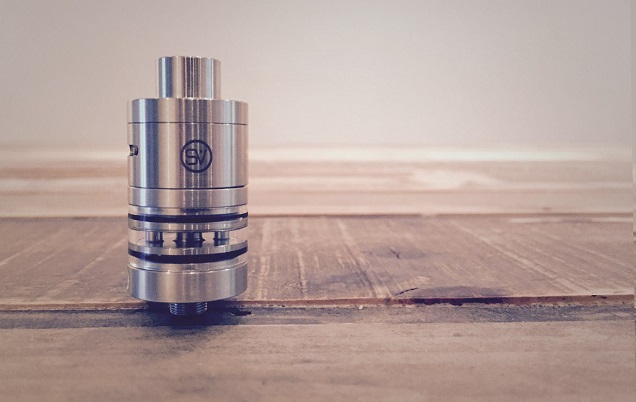
Vaping can be daunting for a newcomer. With a mess of acronyms like RDA, RTA, RBA and RDTA to contend with, even grasping the basics about the types of rebuildable tanks can seem difficult. But like so many things with vaping, it really isn’t as complicated as it might seem.
The acronyms don’t really matter – what matters is what type of vaping experience you’re looking for and how much you’re willing to tinker and top up to get the results you’re looking for. So here’s a guide to the types of rebuildable tanks to help you get to grips with the options and find your perfect device, with definitions, explanations and pros and cons for each type.
The Very Basics: What is an RBA?
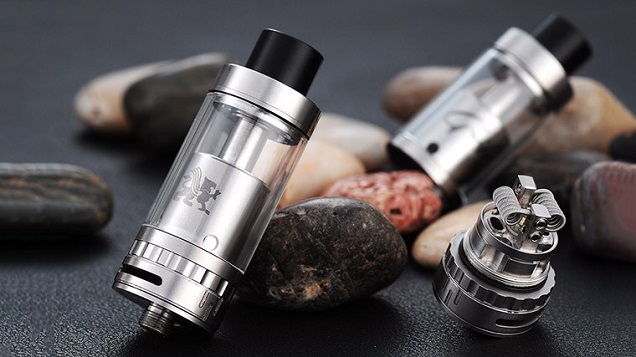
The best place to start a discussion like this is right at the beginning. The term “RBA” is a catch-all one that just means re-buildable atomizer. So all types of rebuildable vape tanks are also classed as RBAs.
The key feature of an RBA is that you make the coil and wick assembly yourself instead of buying it pre-made (as an “atomizer head”). The coil is made from any one of several materials (but usually Kanthal), and the wick is usually cotton.
Technically, rebuildable atomizers that don’t even have tanks are also RBAs. Anything you have to build your own coil for qualifies. But in practice, when most people say RBA they are referring to a rebuildable tank. This is a little confusing, but it’s just a relic of how the jargon has evolved along with the technology.
RBAs Explained: The Key Features
Building a coil for an RBA is really just completing an electrical circuit using a resistor you made yourself. When you press your “fire” button, it sends electricity through your coil and heats it up, and that’s what vapes your e-juice. So RBAs really just offer two or more points for you to connect your coil and complete the circuit.

These are usually on posts, but some do the same thing without posts (for example, the Wotofo Conqueror).

The deck is where all the action happens on any of the types of RBAs. This is where the posts are, where you make the coil and where your vape juice is vaporized. You insert a wick through the coil and position the wick so it can soak up e-juice from the deck and outside it.
The types of rebuildable tanks just use different approaches to getting e-juice to the deck and ultimately, your wick and coil. For example, one RBA might have the tank below the deck and another might have a deck inside the tank. Then, finally, all RBAs have some method of getting the vapor up into the mouthpiece.
Pros and Cons of Rebuildable Atomizers
This immediately shows some important downsides and the upsides of using RBAs overall, and we’ve added some others too. All of these points apply to all types of rebuildable tanks, and RDAs too.
Pros
- It’s much cheaper than buying ready-made coils.
- Better flavor.
- Better vapor production.
- You’re less likely to run out of coils – you can always vape.
- Let’s you tailor your vaping experience to suit your tastes.
Cons
- Not as simple as using pre-built coils.
- It’s important to know what you’re doing – you’ll need some basic knowledge of how circuits work and learn how to stay safe.
- Require a “mod” to use.
What are RDAs? The Non-Tank Rebuildables
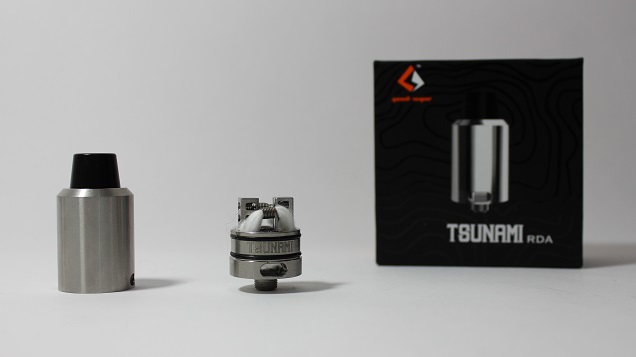
RDAs are a type of RBA, but aren’t a type of rebuildable tank. It stands for rebuildable dripping atomizer, and in some ways, these are simpler than RBA tanks. RDAs only have a “deck” section, and no tank to feed liquid to the wicks. Instead, you manually “drip” liquid onto the wick before vaping. When the liquid in the wick starts to run out, you drip again to soak the wicks before continuing to vape.
RDAs Explained: How RDAs Work
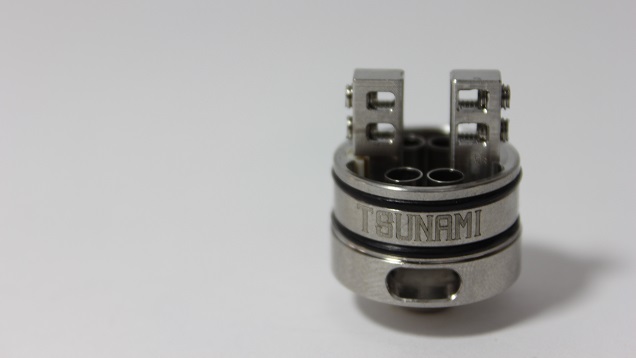
An RDA is the simplest type of RBA, because all you do is connect the coil and insert the wick to use it. They’re composed of a deck section and a “top cap,” which includes the mouthpiece and usually has a mechanism for adjusting the airflow to the coil.
The decks usually have a positive post and one or more negative posts – with two-post designs being common these days. The decks have a lip around the edge to form a “well” that holds a small amount of e-liquid.
So you make the coil, connect it to the posts, check everything works, insert your wick through it and it’s ready to use. Drip e-liquid on the coil and wick, put the top cap on and you’re ready to vape. We have a more detailed guide here (read How to Build an RDA Coil).
Should You Get an RDA?
Pros
- Excellent performance. RDAs are a very direct way to vape. The liquid gets dripped directly onto the wick and coil and is vaporized before going right up to your lips. This means great flavor and vapor production – it’s often hard to beat.
- Easy to change flavors. There’s no need to empty a tank to change flavor with an RDA. You can directly change the wick whenever you like or just vape until it dries out before changing it.
- Generally affordable. RDAs are simple and so are usually quite cheap to buy, though they can get expensive too.
- Great airflow options. RDAs are very well-suited to unique, complex and effective airflow designs. Some user under-coil airflow, some use side airflow and some use both.
Cons
- More labor-intensive than tanks. Having to regularly drip means you have a lot more to do when you’re vaping with an RDA.
- They’re prone to leaking. Unless you vape whatever is there before you put your RDA away, leaks are a common problem with RDAs in particular.
The Bottom Line on RDAs
A great way to vape for the long-term vaper, RDAs perform well and are affordable, especially in the long-term. The big downside is that you have to drip your e-juice regularly. This can be annoying regardless, but also rules out vaping while driving.
Check out some of our RDA reviews:
What Are RTAs?
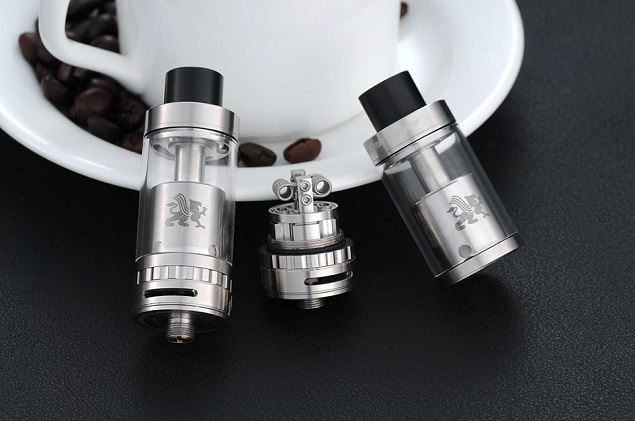
RTA stands for rebuildable tank atomizer, and it’s one of the main types of rebuildable tanks. An RTA is really a lot like an RDA, except with a tank surrounding the deck and supplying liquid to it. The deck is encased in a chamber, but there are small openings that allow juice to make it’s way up to the wick and coil. In essence, they work like normal vape tanks but you make your own coil for them.
RTAs Explained: How RTAs Work
In a normal vape tank, there is an atomizer head (containing the coil and wick) at the bottom of the deck in the center, and a central tube running up from it to the mouthpiece. RTAs work in the same way, except the atomizer head is really a small deck that you build your coils on.
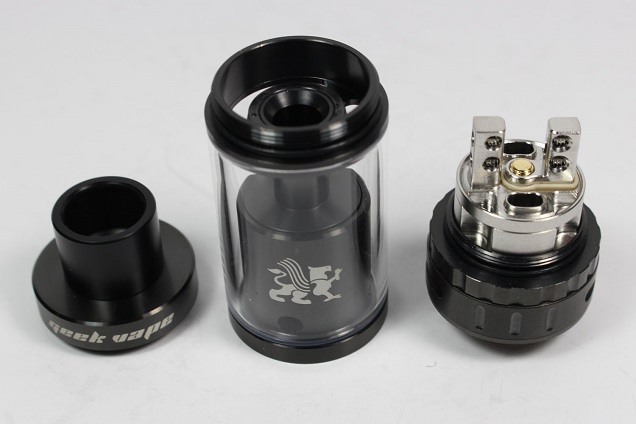
The deck itself is usually like a smaller version of an RDA deck. The main difference is that under-coil airflow is much more common because it’s the only place the air can really come from. The other major difference is that there are usually small channels that allow e-juice to be fed to the wicks and coils. These occupy the edges of the deck, usually positioned so your wicks naturally fall onto them.
So your coils connect to posts in the same way, and your wicks rest in the small juice channels. Instead of a top cap, the deck is enclosed in a small chamber, which feeds directly up to the center tube and your mouthpiece.
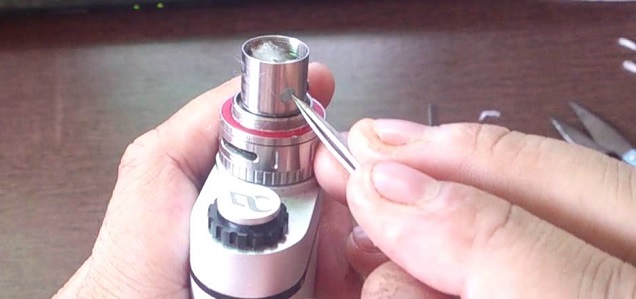
When the chamber is screwed on and the tank is filled with e-juice, it makes it’s way into the channels and soaks your wicks. With pressure from the inside of the tank and gravity working on your side, your wicks are quickly replenished with e-juice as you vape.
Of all the types of rebuildable tanks, RTAs work the most like ordinary sub ohm tanks.
Should You Get an RTA?
Pros
- Great performance. They perform almost as well as RDAs, and sometimes they’re just as excellent.
- Refilling is easier than dripping. With tanks of 5 ml or even more being common, you’ll have to fill up a lot less often with an RTA.
- Still affordable. Using an RTA is cheap for the same reason using an RDA is – the materials you need to keep going are very affordable.
- Safer to use while driving or doing other stuff. You can easily vape while driving or while working, without the need to drip.
- Under-coil airflow. RTAs can’t have side airflow like RDAs, but the under-coil airflow systems are great for clouds and flavor.
Cons
- Harder to set up. RTA decks are often short on space, so rebuilding and especially wicking can be a bit fiddly.
- Performance isn’t always consistent. If you don’t wick your coils in the right way, you can get inconsistent performance with some RTAs.
- Leaking is common. Under-coil airflow arrangements often lead to leaking through the airholes.
The Bottom Line on RTAs
RTAs are the purest of the types of rebuildable tanks, with performance and functionality just like ordinary sub ohm tanks. If you’re comfortable building coils on a slightly confined deck and don’t like dripping, RTAs are a great choice.
Check out our reviews of purpose-built RTAs:
And our reviews of sub ohm tanks with optional/included RBA heads:
What Are RDTAs?
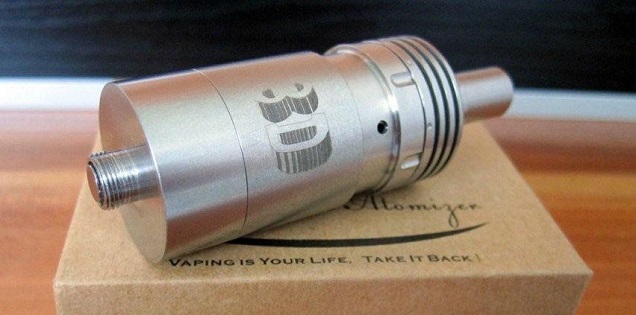
RDTA stands for rebuildable dripping tank atomizer. As the name suggests, this is a bit of a hybrid of the RTA and the RDA, and they’re often called “auto-drippers.” However, this class isn’t really that clearly defined, and there are big overlaps with other types of rebuildable tanks, including RTAs and the Genesis-style devices we’ll cover shortly.
RDTAs Explained: How RDTAs Work
Originally, RDTAs worked a lot like RTAs but had a system that allowed you to manually send some e-juice to your wick and coils (like the 3D pictured above). For example, the drip tip would serve as a plunger, which you’d push down to pump some e-juice from the tank onto the deck. So in a way, they’d work a lot like an RDA but with the dripping replaced by a quasi-automated process.
The only problem for these types of rebuildable tanks is that they didn’t work consistently. The complicated designs with plungers and moving parts often went wrong. This is why you don’t see traditional-style RDTAs that often these days.
The reason you still see the term used is because the definition of RDTA these days has been muddied quite a bit. In many cases, they’re just like updated versions of Genesis-style atomizers.
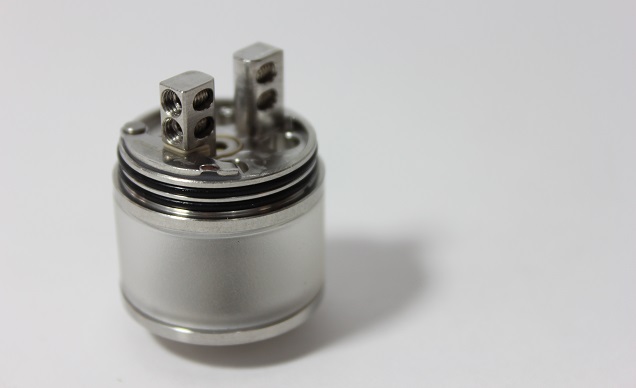
These are very similar to RTAs, except the deck is above the tank and juice is drawn upwards onto it. In practice, most RDTAs these days have holes drilled through the deck and you tilt the device to “auto-drip” some more juice.
Should You Get an RDTA?
Pros
- They (usually) perform well. The original designs might be a bit hit-and-miss, but on the whole RDTAs perform really well, especially the modern style.
- Easier to build than RTAs. RDTAs generally have a building deck more like an RDA, which makes the process much more forgiving.
- Easier to top up than RDAs. RDTAs offer dripping-like operation without the need to remove a top cap and keep a bottle of juice with you at all times.
Cons
- True RDTAs are hard to find. The original-style RDTAs didn’t always work well and are consequently quite hard to find.
- Gravity works against you. Modern-style RDTAs have tanks below the deck, which means gravity works against you when it comes to wicking.
- A lot can go wrong on older designs. More complicated systems open the door to more problems in use.
The Bottom Line on RDTAs
True RDTAs aren’t often found these days for a reason: they didn’t work as well as vapers had hoped. Newer designs are still great, but are more like Genesis-style RBAs than original RDTAs.
Check out these reviews of modern-style RDTAs:
Quad Flex Survival Kit by Aspire
What are Genesis-Style RBAs?

The main types of rebuildable tanks all have a lot of overlaps in terms of design and function. The biggest overlap, though, is between RDTAs and Genesis-style devices. This is mainly because manufacturers have started calling modern Genesis-style devices RDTAs.
A Genesis-style device (technically it should be Genisis – but the community has long since changed that) is an RTA with the deck above the tank, and holes in the deck for the wick. These were created in 2011 by an E-Cigarette Forum user, and quickly took off among early cloud-chasing vapers. One of the defining characteristics of this type of rebuildable tank is that most were designed to be used with stainless steel mesh as a wick.
Genesis-Style RBAs Explained: How Genesis-Style RBAs Work
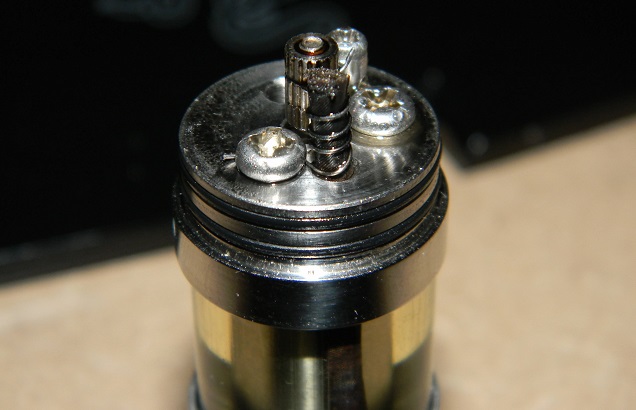
Old-style Genesis RBAs all had a very similar design. The upper deck contained one center post, which had adjustable thumb-screws extending up its length so you could trap your coil-end easily, and one contact point on the deck. There were also several holes in the deck itself, which were either used for filling or for inserting your wick. Some also had negative posts, but contact points on the deck were more common.
Because of the design, vapers build vertical coils for classic Genesis-style RBAs. They’d be wrapped directly around a tube of stainless steel mesh, which was inserted vertically downwards into the tank. One common issue with this was short circuits, which could easily form with a metallic wick. Ingenious vapers solved this issue in various ways, but ultimately this was why RDAs and other types of rebuildable tanks quickly became more popular.
Modern Genesis-style RBAs share a lot of characteristics with traditional types, but have a much more user-friendly design. Devices like the Geekvape Avocado are most usefully described as an RDA deck with a tank section underneath. Most use a two-post design, with multiple holes in each post for multi-coil builds.
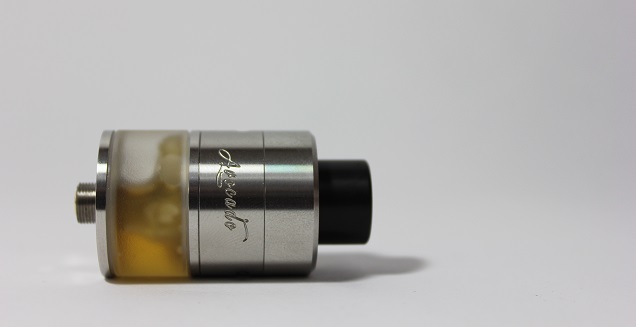
Unlike traditional types, the holes in the deck on modern designs are set up so they work with horizontal coils, and can be effectively used with cotton wicks. You can either setup so the wicks just touch the holes in the deck, or so they hang down into the tank and come in direct contact with the e-juice.
Should You Get a Genesis-Style RBA?
Pros
- Easy rebuilding. The upper deck layout makes building on Genesis-style devices about as easy as on RDAs, especially for modern designs.
- Excellent performance on modern styles. Many modern Genesis-style devices perform just as well as RDAs. However, older types were often inconsistent.
- Easier to wick than RTAs. Getting the wick setup is much easier on Genesis-style devices, and you can get consistent performance with the wicks on the deck or hanging down into the tank.
- Most can be used as RDAs too. If you don’t want to fill the tank, you don’t have to – Genesis-style devices can serve as RDAs too. This is especially true of devices like the Aspire Quad Flex.
Cons
- Old-style designs have a lot of problems. The thumb-screws on classic Genesis-style RBAs were annoying, but the stainless steel mesh is the most annoying part – shorts and hot-spots are irritatingly common.
- Wicking has to fight gravity. Getting juice to your coils means fighting gravity, so you can get dry hits if you don’t make absolutely sure you’ve soaked your wicks.
The Bottom Line on Genesis-Style RBAs
Genesis-style RBAs didn’t used to be all that great, but the newer style devices are some of the best types of rebuildable tanks on the market. The performance is right up there with RDAs, but they’re much easier to use.
What Are Kayfun-Style RTAs?
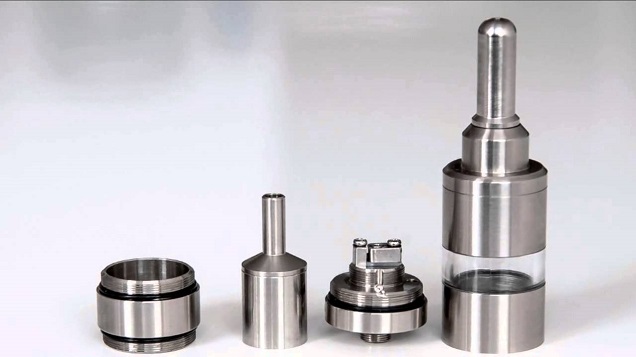
The Kayfun was an absolute game-changer when it first soared to popularity, and it’s easy to see why. Most types of rebuildable tanks owe their history in part to the Kayfun – or to be more precise, the Golden Greek designs that inspired it – and so it’s not surprising that the Kayfun is very similar to most modern RTAs. When the Kayfun was released, it was most vapers’ first taste of the convenience and great performance offered by rebuildable tanks.
Like RTAs, Kayfun-style tanks have a deck at the bottom of the tank, which is set up perfectly for single-coil builds. This is enclosed by a chamber just like it is on most RTAs, and there are two channels running up the side for your e-juice to get to your coil. This is all surrounded by a tank in the same way as with most RTAs.
Kayfun-Style RTAs Explained: How Do They Work?
Kayfun-style RTAs work just like ordinary RTAs: you connect your coil to the two posts, position it over the big, under-coil airflow and insert your wick. Then you soak the wick and coil manually, screw on the chamber and the tank, then fill up and vape.
Really, Kayfuns are so similar to RTAs that they can’t really be considered one of the types of rebuildable tanks on their own. They’re only included here because of their significance to the evolution of RBAs.
Should You Get a Kayfun-Style RTA?
Pros
- Great flavor. The Kayfun may be lacking when it comes to vapor production, but the flavor from the tank is excellent.
- Easy to build. The build deck on Kayfun-style RTAs is spacious and well-designed. Modern devices often do better on this front, but it’s still great.
- Good wicking. The wick is pretty easy to set up on the Kayfun – it still takes some getting used to but once you get the hang of it you won’t have issues.
- Great for mouth-to-lung vapers. Mouth-to-lung vaping isn’t supported by many devices these days, but the Kayfun is definitely one of them.
Cons
- Outdated. The Kayfun was great for it’s time, but for cloud-chasers in particular there are much better devices on the market.
- No support for multi-coil builds. Another sign of the time it was made is that the Kayfun is really only set up for single-coil builds.
- Airflow could be better. The reason the Kayfun isn’t the best for cloud-chasing largely comes down to the airflow, which is more restricted than on modern tanks.
- Hard to find. Original and older-model Kayfuns are hard to find these days, but you can pick up the newer Kayfun 5.
The Bottom Line on Kayfun-Style RTAs
Kayfun-style RTAs had their moment to shine, and although they’ve fallen out of favor compared to newer models, they do still have a lot going for them. If you’re a mouth-to-lung vaper who likes flavor-chasing and a hint of vape-nostalgia, you should pick one up!
Conclusion: The Overlapping Types of Rebuildable Tanks
The overall lesson from this post is that the types of rebuildable tanks all share some common features, and they all work in a very similar way. Different types have different advantages and disadvantages, but on the whole, the headline benefit for any type of RBA is much better performance at a much lower price. If you’re happy building coils and you want the best performance, they really are the best way to vape.
Also Read:
Best Atomizers and Clearomizers

